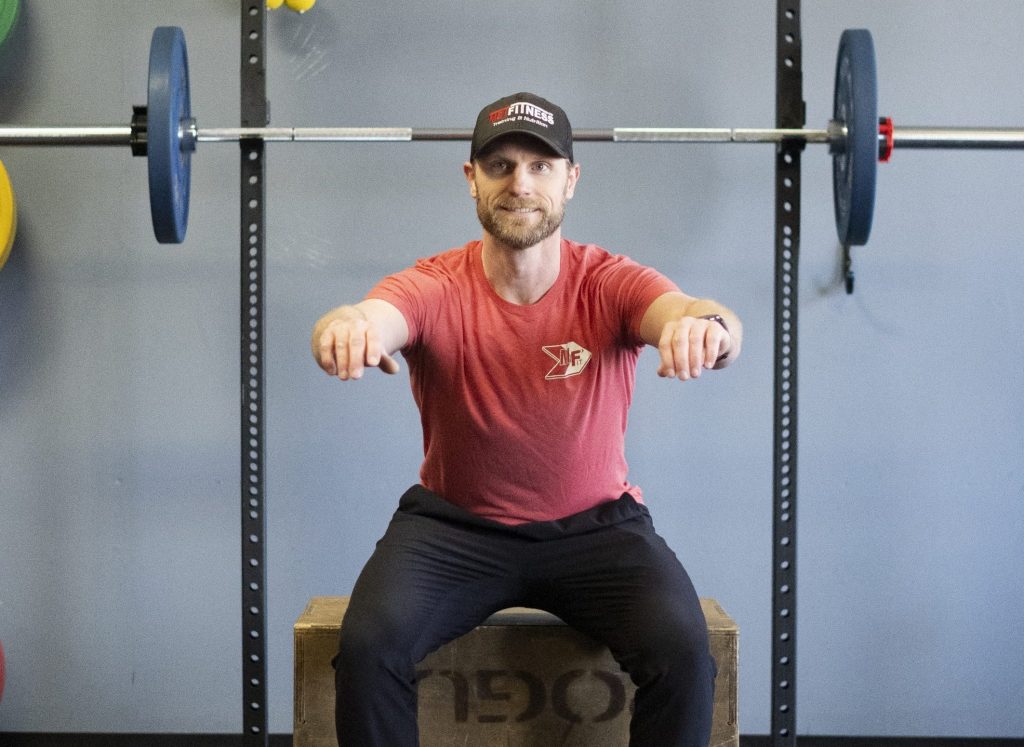Photos by Ava Kitzi
One of the most encouraging changes I’ve witnessed in the health and fitness world is a growing emphasis on strength. Twenty years ago, you would walk into a major fitness center and see a room full of treadmills, bikes, ellipticals and every imaginable piece of cardio equipment. In contrast, there might only be one rack of dumbbells and a single squat rack. These days, you’re likely to see almost as many squat racks as treadmills in those same facilities. But, with all this emphasis on weight training, I still see confusion when it comes to the best exercises for building strength.
It has long been said that the squat is king. Now, it’s up for debate whether squats really deserve royalty status, but one thing is certain, squats are an essential tool for building strength. The primary movers of the squat motion are the quadriceps and glutes. We also get help from the hamstrings and the calf muscles. You’re training your entire lower body when you squat, but you’re also using a lot of abdominal and back strength to stabilize your squatting posture.
Simply squatting with your body weight is a great place to begin. Not sure how far to sit? Use a box as a target. Want to add some effort? Hold a weight at your chest for a goblet squat. Eventually, adding a barbell can be a great progression for added core stability and spine strengthening.
- Stand with your feet slightly wider than your hips.
- Maintain an upright, neutral spine.
- Initiate the movement by bending your hips.
- Bend your knees as much as you can without pain.
- Keep your knees in line with your feet, and keep your heels on the ground.
If the squat is the king of all lifts, then the hinge is queen. The hinge is a lot like a squat except more of the movement comes from bending at the hips. Here, the muscles of the glutes, hamstrings and lower back are doing more of the work. You’re using a lot of abdominals to stabilize too. Like the squat, this movement can eventually progress to lifting a barbell from the floor. However, it’s best to start with a dumbbell or kettlebell between the feet to get comfortable with the form.
QUICK TIPS FOR HINGING:
- Breathe down into your belly and contract your abdominals.
- Bend from your hips while pushing your butt back.
- Maintain a neutral spine while your torso leans forward to about 45 degrees.
- Bend your knees slightly.
- Keep your gaze forward throughout the movement.
Muscular balance is key for a strong, functional body. Along with squats and hinging for the lower body, we need to press and pull to work the upper body. A classic upper body pressing motion is the push-up, working the chest, shoulders and triceps. Another functional upper- body push is the overhead press. With this movement, you are working the deltoids of the shoulders and the triceps of the back of the arm. My favorite pressing exercise is the dumbbell shoulder press.
QUICK TIPS FOR OVERHEAD PRESSING:
- Begin with weights at your shoulders.
- Draw your shoulder blades down and back.
- Maintain a tall, neutral spine while pressing weights above the shoulders.
One of the most traditional exercises for upper body pulling is the pull-up. While this is an amazing strength builder, not a lot of folks are able to perform unassisted pull-ups. For that reason, I like the bent-over row. Like most of the movements above this can be done with any type of weight from dumbbells to barbells. I recommend starting with a simple DB bent-over row.
QUICK TIPS FOR BENT OVER ROWS:
- Begin by hinging from the hips with your torso leaning forward 45 degrees.
- Hold weights directly under the torso, arms straight and perpendicular to the floor.
- Pull the weight into your torso while drawing your shoulder blades together.
The final movement to consider is more of a position than a movement. The plank is an amazing exercise for core strength and stability. Planks
are traditionally performed from the elbows and toes, or even a tall plank from the hands. In a tall plank, there are variations with tapping hands to shoulders or kicking legs into the air while planked. The thing that all plank options have in common is a solid, neutral torso.
QUICK TIPS FOR THE PLANK:
- Maintain an activated core by engaging all the muscles around the waist.
- Keep a neutral spine with a straight line from shoulders to hip and hips
to knees. - Be sure to keep breathing while holding the position.
Mason Stevens is owner and exercise physiologist at MET-Fitness in Columbia. He has his bachelor’s in nutrition and fitness, and has more than 10 years of experience in sports conditioning, coaching and fitness.








